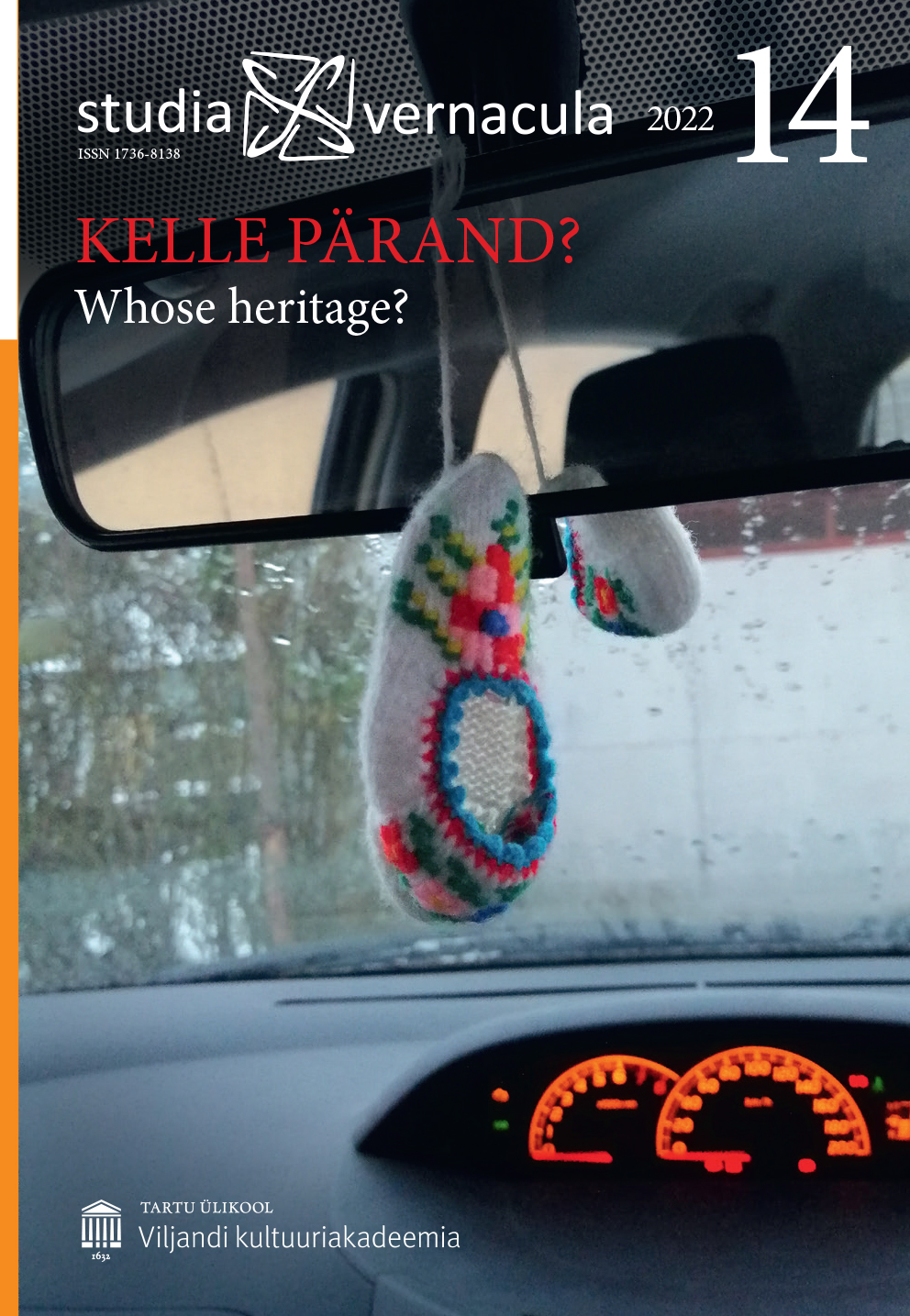Soome-ugri rahvaste pärand Eesti Rahva Muuseumi kogudes / Finno-Ugric heritage in the Estonian National Museum
DOI:
https://doi.org/10.12697/sv.2022.14.44-71Abstract
The focus of this article is the historical context of the Finno-Ugric collection in the Estonian National Museum (ENM) and how it is positioned in relation to source communities.
Some of the central issues in the museological discussions inspired by postcolonialist perspectives have been the controversy of non-local heritage in museums and the relationship between museums and source communities. These discussions have not only been limited to the collections with explicitly colonial contexts but have also provoked questions of the power dynamic between institutions/collectors and source communities more widely. This has inspired us to look critically at the history of collecting Finno-Ugric objects and to ask about the collection’s meaning to contemporary Finno-Ugrians.
The ENM’s Finno-Ugric collection is the largest non-Estonian museum collection in Estonia. As Estonians belong to the Finno-Ugric language family, the collecting tradition of non-Estonian Finno-Ugric objects has been motivated by the notion of Finno-Ugric kinship and framed within nationalist ideology. To a certain extent, Estonian ethnic consciousness has included other Finno-Ugric peoples as ‘our own’, the idea of being culturally related allowed Estonians to conceptually amplify their nation. The Finno-Ugric cultural heritage has thus been conceptualised as a common legacy of all kindred peoples. Although such a view puts an emphasis on the idea of belonging together, at the same time, a certain othering discourse is also discernible in the gaze of Estonian scholars/collectors. Some aspects of cultural heritage of other Finno-Ugrians’ that do not correspond to the historical experience of Estonians have typically been interpreted as only recent, inauthentic and inherently alien to the ancient Finno-Ugric core. ‘Authenticity’, characterised by the age and cultural ‘purity’ of a tradition or an object has been in the focus of Estonian ethnographers, while contemporary developments and signs of modernity have been prone to be interpreted as signalling cultural decline. However, as we know from the fieldwork diaries, local Finno-Ugrians have sometimes resented the ethnographers’ attention to the “old and unseemly”, interpreting this as showing them being backward. Nevertheless, although the ethnographers’ appetite for the outdated objects perplexed the locals at times, the collecting activities were generally viewed benevolently and also very pragmatically – selling old stuff that people no longer needed was seen as a good opportunity to earn some extra money.
The main part of the Finno-Ugric collection was formed during the Soviet period when Estonia was in common geopolitical space with most of the other Finno-Ugric peoples. The central museums in Eastern Finno-Ugric regions also engaged in ethnographic collecting but limited their efforts to the cultural heritage of local people(s). The ENM differed in its holistic approach to the Finno-Ugric peoples, aiming to obtain a collection that would represent the material culture of all kindred peoples. While the collecting efforts of the ENM could also be viewed being in a certain competition with the local museums, collaboration with regional museums and research institutions has been in the foreground.
So far, the main users of the Finno-Ugric collections have been Estonians. In recent years, there has been a slight increase of interest from the FinnoUgric museums and researchers in Russia. Unfortunately, as the documentation in the archives is in Estonian, it has restrained their ability to delve into the materials.
Our preliminary study among people of Eastern Finno-Ugric descent living in Estonia, which focused on their attitude towards ENM’s collecting tradition and Finno-Ugric collection, revealed modest interest in the latter. While this seems to suggest that the objects of material heritage kept at the museum have no particular personal or emotional meaning for the respondents, they did attribute the Finno-Ugric collection and permanent exhibition with certain symbolic value and importance. With a reference to the fragility of cultures of small peoples and ethnic groups, the Echo of the Urals exhibition is conceptualised as a possibility to introduce these peoples to a global audience. And even though one might not have an active interest in the collection or a need to personally relate to it just now, the knowledge that the heritage of their ancestors is being preserved and cared for in the museum, and that it is accessible in case there will be such need and interest in the future, was considered somehow reassuring. In addition to this, more practical expectations of the museum were expressed. For example, it was proposed that the museum might be the venue for a regular meeting place for the Finno-Ugric communities. Stronger emphasis on ethnic origin came to the fore in the case of families with children – living in Estonia. The potential of the museum as an aiding context for passing on the knowledge about traditional culture to the younger generation was noted.
The museum is thus assigned the role of entrusted steward and the idea of Finno-Ugric kinship has played a certain role in shaping the communities’ positive attitude towards ENM. Keeping in mind the principles of cultural sensitivity and reciprocity as key concepts in contemporary museological practices, it is crucial that the museum acknowledges its responsibility and ethical duty to offer possibilities for the source communities to participate in decisions concerning the representations of their cultural heritage. The main challenges for the museum are finding ways to share the knowledge about the collections and making these accessible for the communities, but also creating channels to put forward their own ideas and desires in representing this heritage.
Keywords: cultural heritage, museum collections, Finno-Ugric, ethnic identity, Estonian National Museum

